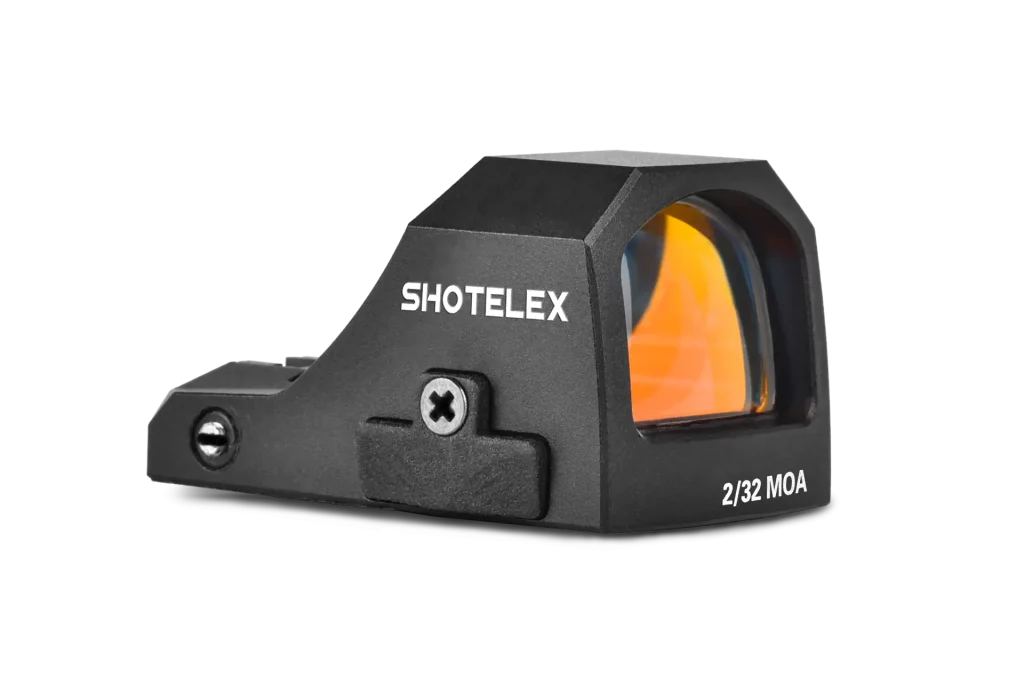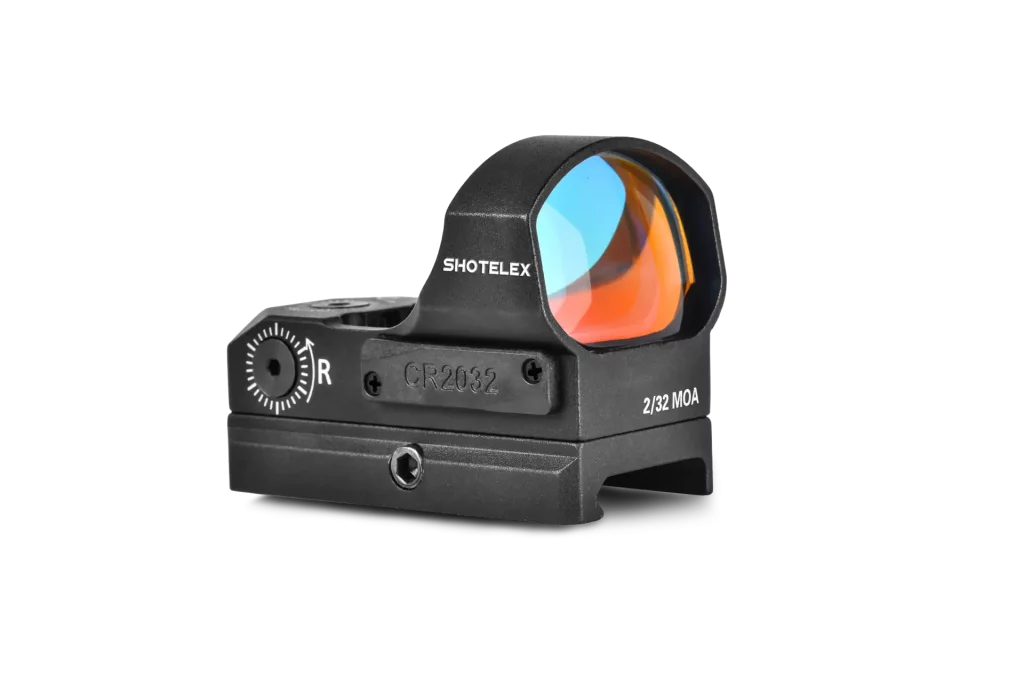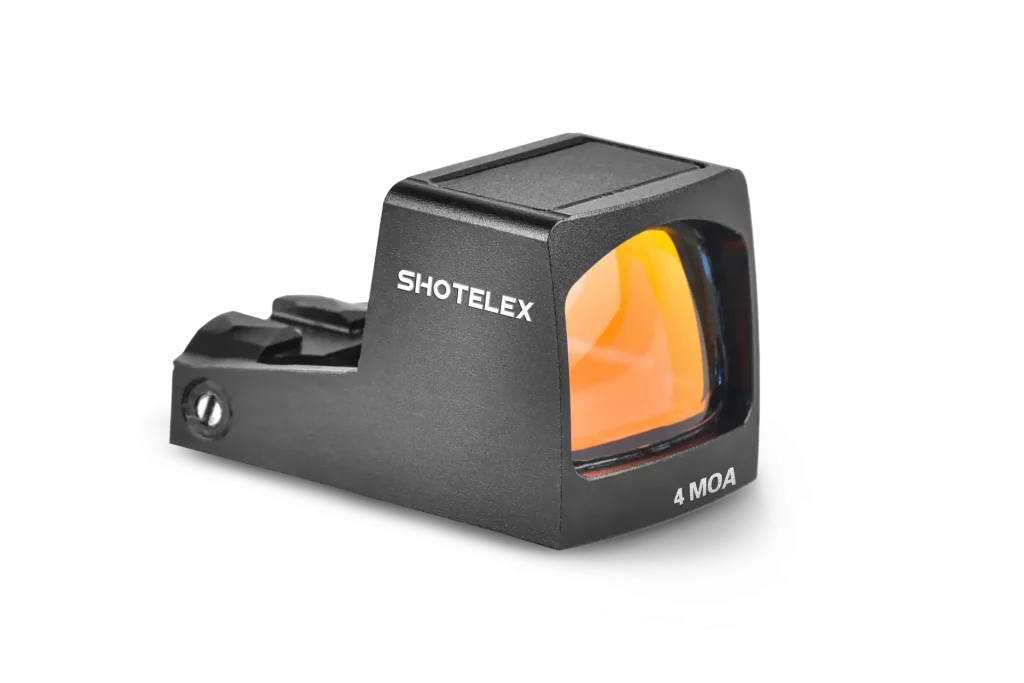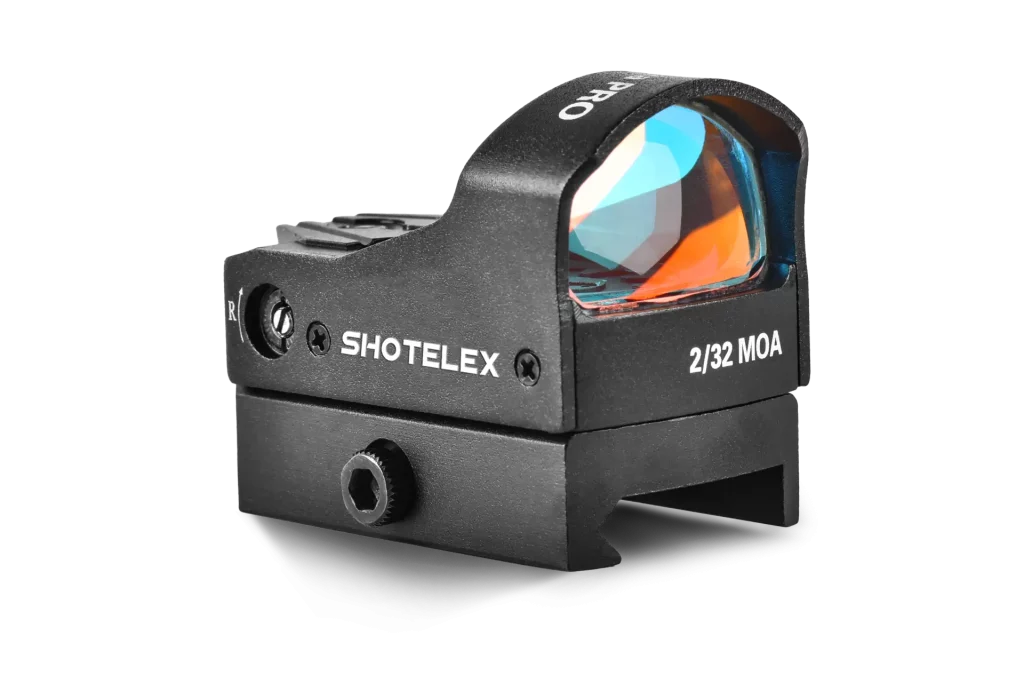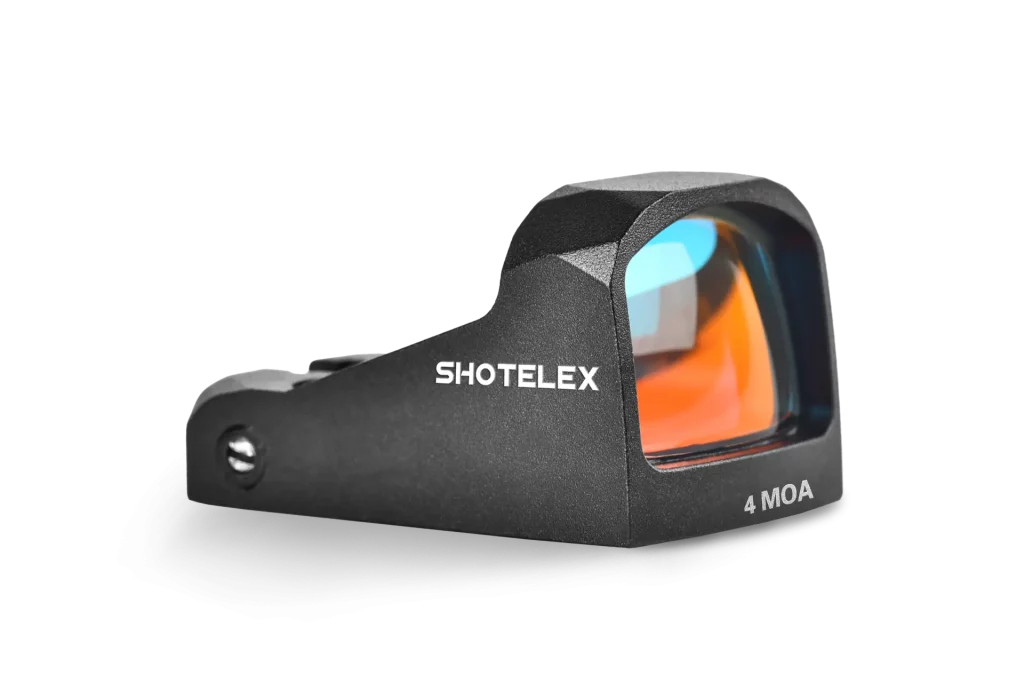Should Red Dot Align with Front Sight? Shooter’s Guide
For both recreational and professional shooters, should red dot align with front sight has been up for debate for many years. Alignment not only affects the accuracy of the shot, but also the speed and enjoyment of the shot. In this article, the interaction between the red dot sight and front sight will be broken down, and useful tips will be included along the way. Let’s dive in.
Part 1. What is a Red Dot Sight?
A red dot sight is a reflex sight that displays a red dot on a lens, enabling the shooter to rapidly aim at the target. It has become a standard element in tactical shooting, hunting, and competitive shooting because of its special benefits:
Rapid Target Acquisition: A red dot sight eliminates the necessity of aligning rear and front sights simultaneously that is present with conventional iron sights. Red dot on target and fire is what shooters do, which considerably speeds aim, especially in dynamic or close quarter engagements.
Minimum Parallax: Modern red dot sights are designed to have very minimal parallax. This means the position of the red dot remains almost the same relative to the target even if the gun owner’s eye is not perfectly centered. This feature offers higher accuracy without a need for the eyes to be in precisely the same position, rendering it suitable for rapid fire.
Ease of Use at Low Light: The red dot remains perceivable under low light, reducing the effort at target capture from the typical iron sights. This is beneficial to hunters during early mornings or late evenings, or when tactical operations involve poor available light.
Versatility and Convenience: Red dot sights allow the gunner to maintain a natural head angle and an increased field of view. This reduces fatigue during prolonged periods of shooting and increases situational awareness.
Because these advantages are possible, a majority of shooters wonder: “Do I need to continue to align the red dot with the front sight?” Because red dot sights are designed to simplify aiming, understanding how they function with standard iron sights will enable one to achieve utmost precision and speed.

Part 2. The Controversy Surrounding Aligning the Red Dot with the Front Sight
Among marksmen and professional shooters, whether or not a red dot sight should be indexed to the front sight has been argued about for years. This section contrasts the old iron sight methods with the method of using a red dot sight and discusses situations in which referencing the front sight can be beneficial to improve accuracy, allowing you to grasp how to successfully use a red dot sight.
Traditional Iron Sight Method
There are traditional iron sights that require the shooter to align the rear, front, and target on the same plane. This method provides precise aiming but with limitations: in rapid fire shooting or reacting quickly, it can be relatively slower. The shooter must precisely align the three points prior to firing, which can slow speed and situation awareness.
The Red Dot Sight Approach
Red dot sights are designed to simplify aiming. With a red dot, the dot itself is the primary point of aim, ideally eliminating the need for front sight alignment. Users of firearms can merely place the red dot on the target and focus on the target rather than the sights. This direct aiming is what gives red dot sights their speed advantage, particularly in rapid shooting, close-up engagements, and tactical applications.
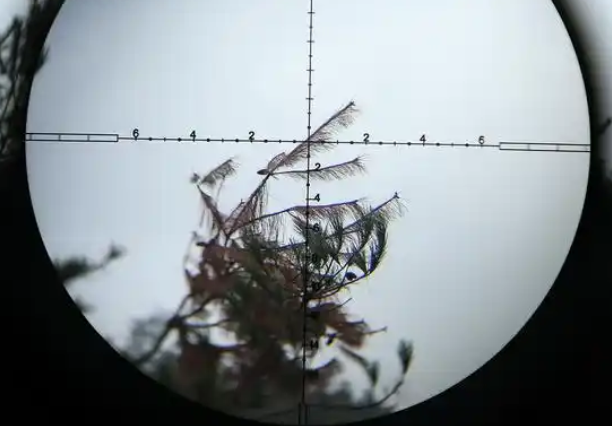
When to Align the Front Sight Can Be Helpful
While aligning the front sight is not absolutely required when utilizing a red dot, there are circumstances in which referencing the front sight can be an advantage for reliability and accuracy:
Backup Targeting: In case the red dot fails or the battery is flat, the front sight can be used as a backup. Training yourself to periodically glance at the front sight keeps you prepared for any equipment failure.
Long-Range Precision Fire: Lining the front sight up on the target to get a better shot at further distances will increase accuracy. While the red dot serves well for rapidity and firings at mid-distances, incorporating the front sight will help to get better precision when every millimeter counts.
Training and Acquisition of Muscle Memory: For beginners acquiring the skills of shooting using red dot sights, employing the front sight as a transition skill is helpful. It allows shooters to get proper eye alignment and aiming postures, making them confident and eventually switch fully to the red dot.
In reality, while red dot sights are meant to make aiming easier and reduce dependence on traditional iron sights, an understanding of when and how to use the front sight as a reference point will increase reliability and accuracy, particularly in high-risk situations.
Part 3. Pros and Cons of Aligning the Red Dot with the Front Sight
A red dot sight aligned to the front sight is a contentious procedure as it has some pros and cons depending on the situation of the shoot. Below is an elaboration:
Pros
Enhanced Backup Safety
Having the red dot coincide with the front sight provides a failsafe if the red dot ever fails or if the battery goes dead. This will allow shooters to continue shooting accurately without pause, especially in tactical operations or high-pressure missions.
Increased Accuracy at Greater Distances
While speed and near-medium range work is where red dot sights excel, using the front sight as a reference allows for increased accuracy at extended ranges. By proper alignment, shots will group more tightly and hit smaller targets more reliably.
Useful for Novice Training
For novice shooters, aiming with the front sight employing a red dot can help develop proper eye alignment, hand-eye coordination, and aiming skills. It is a stepping-stone technique that helps develop the confidence of new shooters before allowing them to rely solely on the red dot for rapid target acquisition.
Cons
Slower Aiming Speed
One of the major benefits of a red dot sight is that it allows for quick target acquisition without worrying about front and rear sight alignment. Including front sight alignment can reduce that speed advantage by slowing down.
Higher Operational Complexity
Shooting at two aiming points—front sight and red dot—is an extra step, and that can hinder shooting, especially under high-stress or rapidly changing situations. This also places extra mental burden on the shooter.
For the majority of near-medium range targets and rapid fire exercises, red dot aligning with the front sight is not required. Aiming with the red dot itself is sufficient to be accurate, and thus front sight alignment becomes an unnecessary motion that isn’t always optimal.
In short, whereas aligning the red dot with the front sight may enhance safety, accuracy, and training efficiency, it may compromise shooting speed and simplify usage. Understanding when and why to use this technique allows shooters to make an informed decision based on their personal shooting needs and environments.
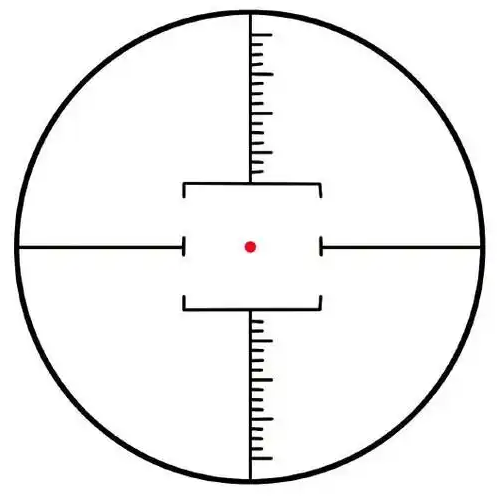
Part 4. How to Use Red Dot Sights Effectively?
When using a red dot sight, the professionals suggest adjusting your technique based on the shooting situation. This is a complete guide:
1. Tactical and Defensive Shooting
In tactical or defense situations, there is need for fast response and velocity. Experts recommend focusing on the red dot itself and not trying to align the front sight with the red dot.
The red dot allows for real-time target acquisition, and this makes gunners react fast to moving targets. Trying to use the front sight as a reference point when in such scenarios has the tendency to slow your response time and effectiveness.
2. Competitive Shooting
For target shooting competitions, the red dot must always be the focal aiming point. Shooters can effect quicker target transitions and more fluid sequences of shooting by getting used to following the red dot alone.
But it’s advisable to practice with the front sight as an alternative as well. This makes one better equipped with a backup in the event of equipment malfunction, like a red dot failure, and adds to a skill set of adaptability.
3. Long-Range Precision Shooting
When firing at longer distances, occasional referencing of the front sight can increase accuracy. Because the red dot is excellent for medium-range speed fire, firing with the front sight added might increase accuracy when firing at closer or distant targets. Professional use would suggest using this technique selectively only when accuracy is more desirable than speed.
4. Expert Tip
Practice Both Ways: Practice the red dot both in isolation and with the addition of the front sight regularly.
Scenario-Based Practice: Make the practice of selecting the proper approach depending upon the shooting environment—a tactical speed, long-distance precision, and competition backup preparedness.
Muscle Memory Development: Regular drilling will cause shooters to automatically determine when to use the red dot in isolation or look to the front sight without delay.
By applying these tips professionally, shooters can maximize the efficiency and versatility of their red dot sights, and respond instantly with high accuracy when the situation requires it.
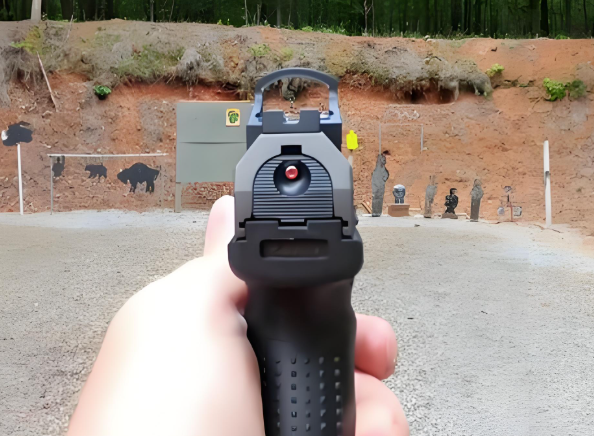
Part 5. Common Mistakes When Use Red Dot Sight
When using a red dot sight for shooting, even professional shooters can make mistakes that impact efficiency and accuracy. Some common mistakes are as follows:
Focusing Too Much on the Front Sight
Overreliance on front sight alignment can nullify the red dot’s biggest strength: fast target acquisition. Shooters will hesitate in their shot when not needed, taking away from the red dot’s effectiveness during quickly changing or close-range scenarios.
Neglecting Zeroing
If the red dot is not properly zeroed, there will be repeated misses, even if the aim appears to be proper. Keeping a close check and adjusting the sight helps ensure that the red dot properly reflects the point of impact.
Lack of Regular Battery Checks
Red dot sights are battery-dependent, and if the battery runs out, the sight will be non-functional. Forgetting to do routine battery checks leaves the shooter at the mercy of the front sight in case of a failure. Precharging or changing batteries in advance prevents a breakdown when you need it most.
Improving these errors keeps the red dot sight’s benefits, speed, accuracy, and reliability, whenever you are ready for whatever shooting situation arises.
Final Thoughts
So, should the red dot sight align with front sight? Answer: not necessarily. In some cases, aiming on the front sight will increase accuracy and safety. Most sport shooters today utilize the red dot for target acquisition, but as a fall-back shot or for shooting further out, the front sight is still effective.
It requires practice, zeroing, and selecting the aiming method based on the shooting venue. In the case of competition, hunting, or tactical defense, how the red dot behaves relative to the front sight can make your shooting expert, effective, and reliable.

